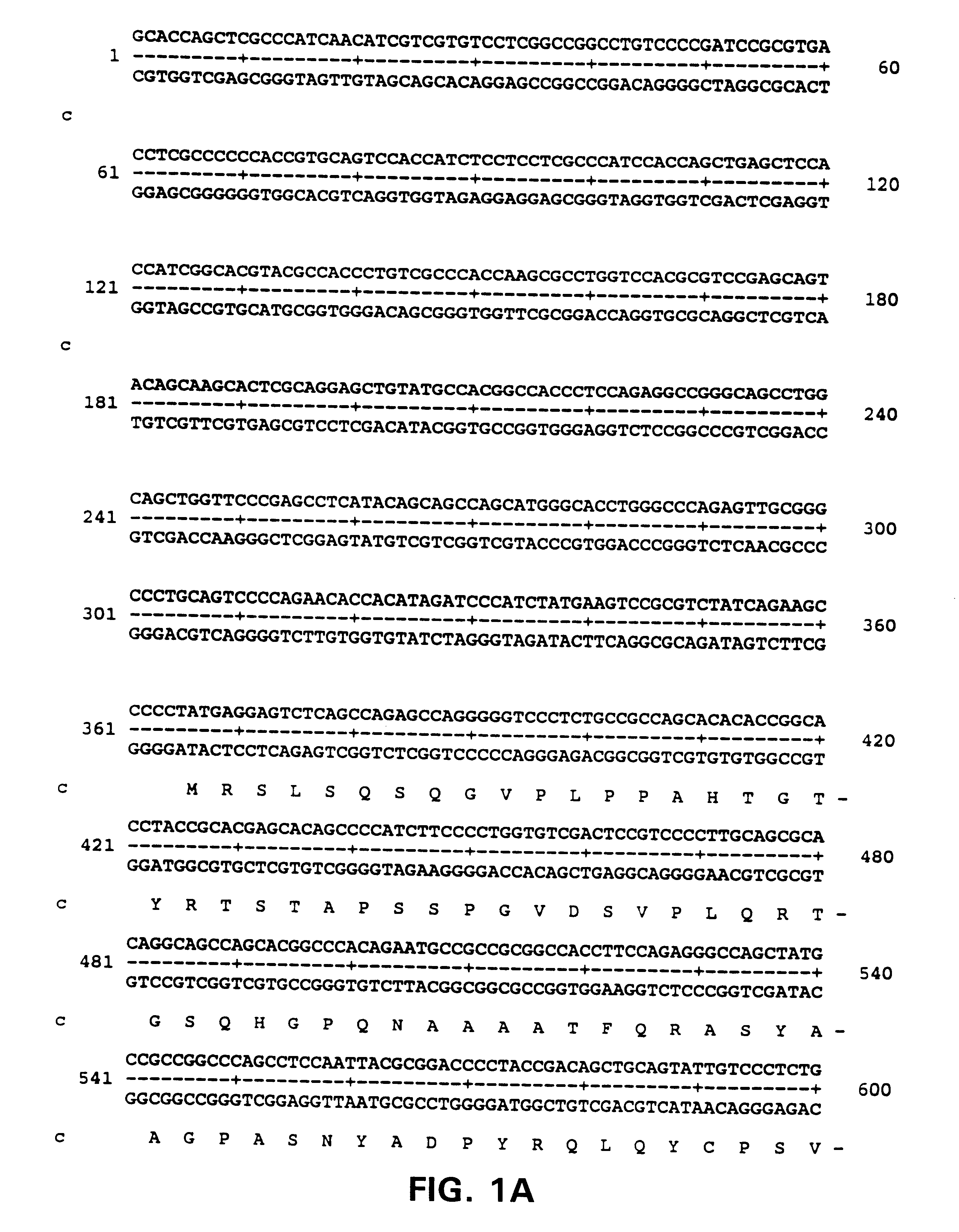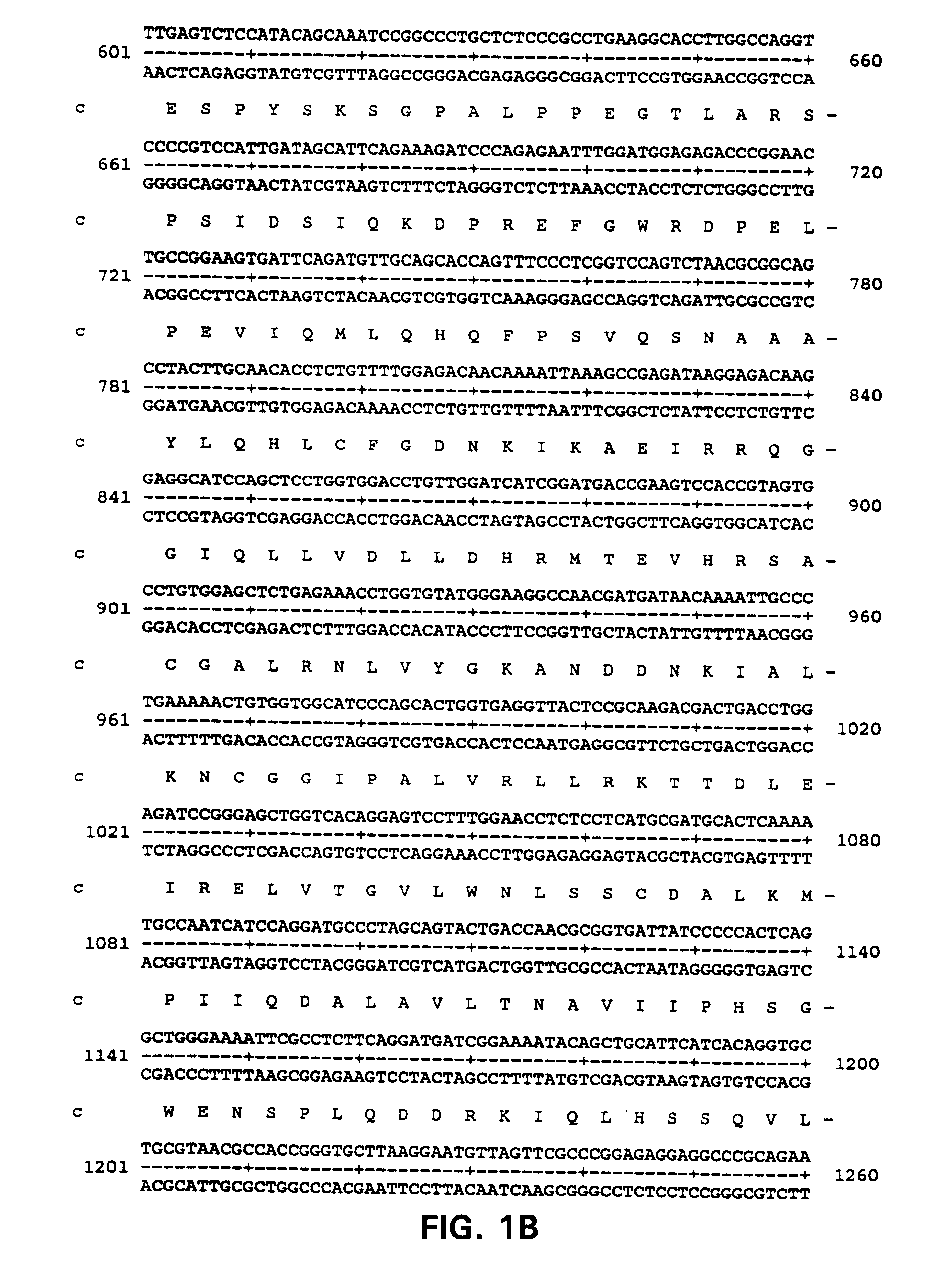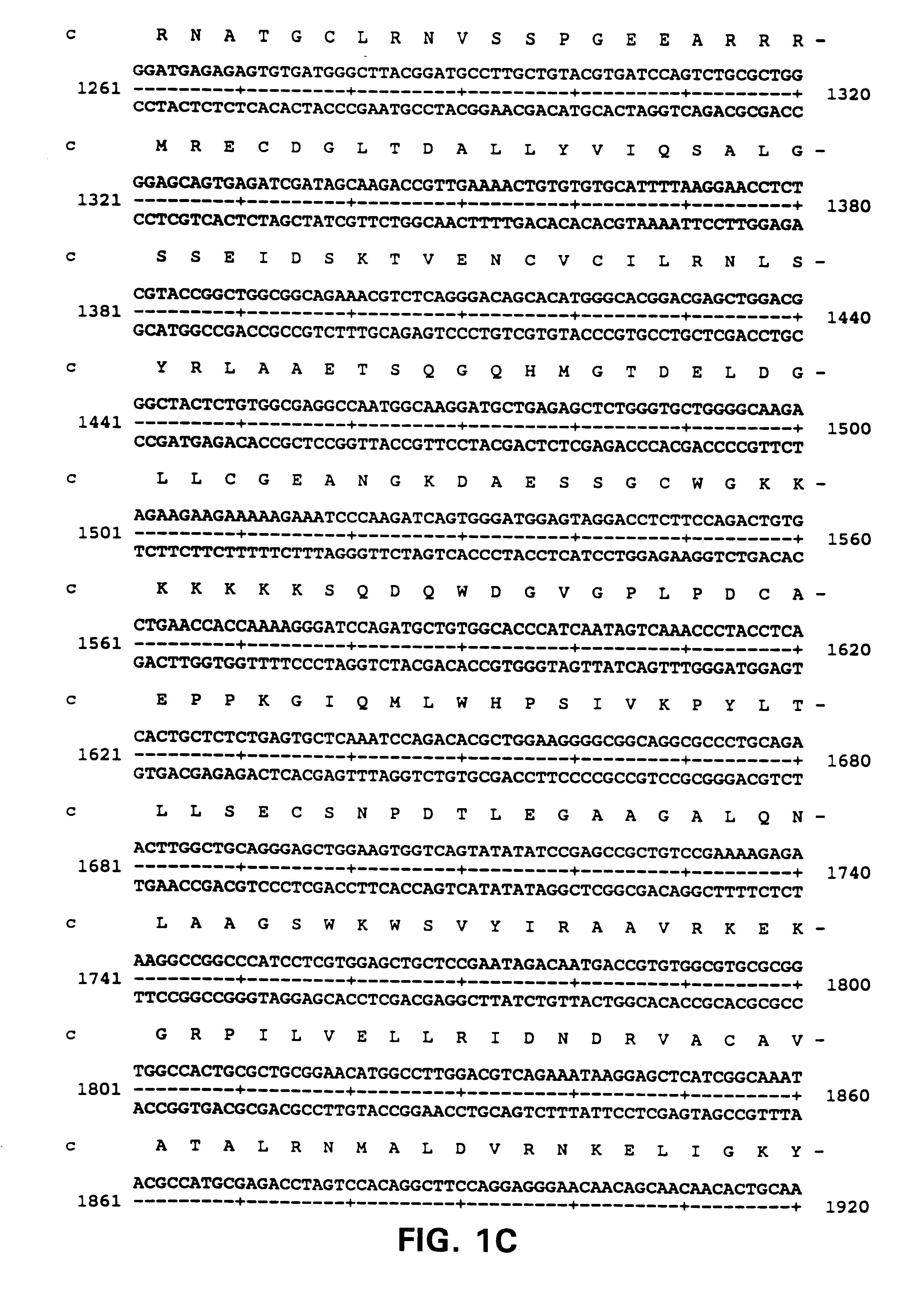Alarm related peptides and nucleic acids and diagnosis using them
- Summary
- Abstract
- Description
- Claims
- Application Information
AI Technical Summary
Problems solved by technology
Method used
Image
Examples
example 1
Primary Structure of ALARM Nucleic Acids and Polypeptides
The yeast two-hybrid system was used to identify cDNAs from a human brain cDNA library that bind to the Loop region of presenilin 1.
PCR was used to amplify the presenilin 1 loop region, which is defined by EcoRI and BamHI sites at it 5' or 3' ends, respectively and which encodes amino acids 260-400 of presenilin. The PCR products and vector PAS2-1 DNA were digested with these two restriction enzymes and then ligated. The resulting construct was confirmed by sequence analysis and named the Loop construct.
Standard procedures were used to identify brain cDNAS that encoded proteins binding to the Loop region. Briefly, the plasmid DNA for the controls of the yeast two hybrid experiment was from the MATCHMAKER II kit (Clontech) which includes pCL1 (full length Gal 4), pVA3-1 (P53 to Gal 4 binding domain), pTD1-1 (SV40 large T-antigen to activation domain), pLAM 5'-1 (Human lamin C to BD).
example 2
Tissue Localization of ALARM RNA Secuences
To determine the tissues in which ALARM sequences are transcribed, poly A.sup.+ RNA was isolated from several human tissues.
RNA was isolated from human tissues using standard procedures. RNA hybridization was performed using Clontech ExpressHyb solution. Briefly, the ExpressHyb Solution was warmed up to 60.degree. C. The nylon membrane was prehybridized in 5 ml of ExpressHyb Solution with continuous shaking at 60.degree. C. for 30 minutes. Denatured ALARM DNA (labeled with .sup.32 P by random primer extension) was added to 5 ml of fresh ExpressHyb to a final activity 10.sup.6 cpm / ml, and the hybridization was carried out for 1 hour at 60.degree. C. The blot was rinsed in wash solution 1 several times at room temperature for 30-40 minutes with continuous agitation, and then washed in wash solution 2 with continuous shaking at 500C for 40 minutes with one change of fresh solution. The blot was then exposed to x-ray film at -70.degree. C. with ...
example 3
Generation of Antibodies Against ALARM Peptides and Co-Immunoprecipitation Experiments Using ALARM Anti-Sera
Polyclonal anti-ALARM antibodies were raised using standard procedures by injecting a synthetic 14 amino acid peptide having the sequence YETSHYPASPDSWV, (SEQ ID NO:13) corresponding to the 14 carboxy terminal residues of the ALARM protein,into rabbits. Anti-alarm antibodies were also raised against a GST-fusion protein containing the 100 amino terminal amino acids of ALARM as shown in FIG. 1 (SEQ ID NO:2). Antibodies raised to the peptides detected a protein migrating with a size of about 130 kDa.
To determine if ALARM binds cadherin or the .beta.-amyloid precursor protein (.beta.APP) protein, co-immunoprecipitation experiments were performed in which anti-ALARM sera was used in co-immunoprecipitation experiments using ALARM and each of the respective proteins. Anti-ALARM sera precipitated cadherin protein when ALARM and cadherin proteins were coexpressed in vitro. Anti-Alarm ...
PUM
 Login to View More
Login to View More Abstract
Description
Claims
Application Information
 Login to View More
Login to View More - R&D
- Intellectual Property
- Life Sciences
- Materials
- Tech Scout
- Unparalleled Data Quality
- Higher Quality Content
- 60% Fewer Hallucinations
Browse by: Latest US Patents, China's latest patents, Technical Efficacy Thesaurus, Application Domain, Technology Topic, Popular Technical Reports.
© 2025 PatSnap. All rights reserved.Legal|Privacy policy|Modern Slavery Act Transparency Statement|Sitemap|About US| Contact US: help@patsnap.com



